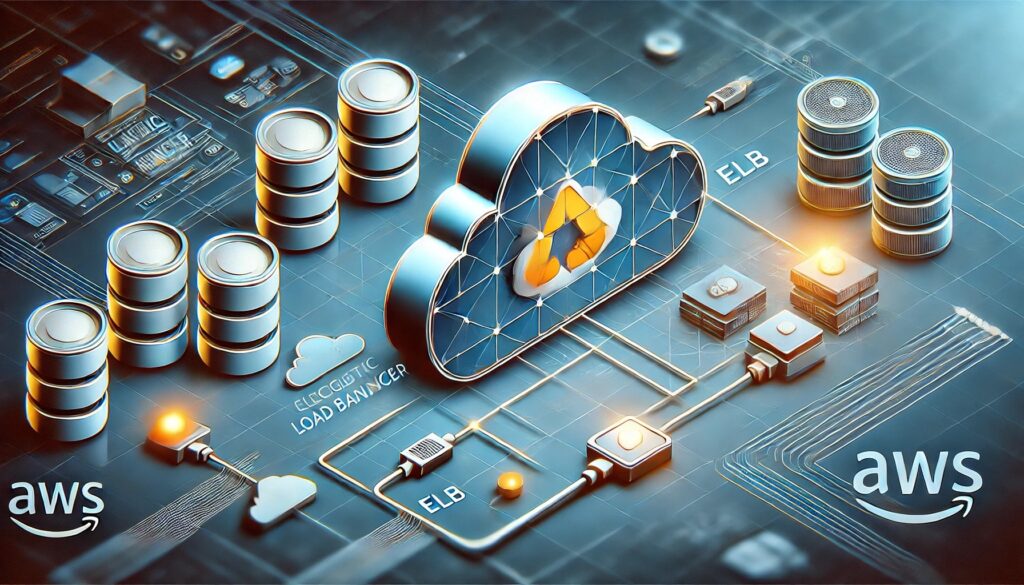
One of the most exciting aspects of cloud computing is the promise of scalability, the ability to expand or contract resources to meet demand. But how do you design an architecture that can handle unexpected traffic spikes without breaking the bank during quieter periods? This question often comes up in AWS Solution Architect interviews, and for good reason. It’s a core challenge that many businesses face when moving to the cloud. Let’s explore some AWS services and strategies that can help you achieve both scalability and cost efficiency.
Building a Dynamic and Cost-Aware AWS Architecture
Imagine your application is like a bustling restaurant. During peak hours, you need a full staff and all tables ready. But during off-peak times, you don’t want to be paying for idle resources. Here’s how we can translate this concept into a scalable AWS architecture:
- Auto Scaling Groups (ASGs): Think of ASGs as your restaurant’s staffing manager. They automatically adjust the number of EC2 instances (your servers) based on predefined rules. If your website traffic suddenly spikes, ASGs will spin up additional instances to handle the load. When traffic dies down, they’ll scale back, saving you money. You can even combine ASGs with Spot Instances for even greater cost savings.
- Amazon EC2 Spot Instances: These are like the temporary staff you might hire during a particularly busy event. Spot Instances let you take advantage of unused EC2 capacity at a much lower cost. If your demand is unpredictable, Spot Instances can be a great way to save money while ensuring you have enough resources to handle peak loads.
- Amazon Lambda: Lambda is your kitchen staff that only gets paid when they’re cooking, and they’re really good at their job, they can whip up a dish in under 15 minutes! It’s a serverless compute service that runs your code in response to events (like a new file being uploaded or a database change). You only pay for the compute time you actually use, making it ideal for sporadic or unpredictable workloads.
- AWS Fargate: Fargate is like having a catering service handle your entire kitchen operation. It’s a serverless compute engine for containers, meaning you don’t have to worry about managing the underlying servers. Fargate automatically scales your containerized applications based on demand, and you only pay for the resources your containers consume.
How the Pieces Fit Together
Now, let’s see how these services can work together in harmony:
- Core Application on EC2 with Auto Scaling: Your main application might run on EC2 instances within an Auto Scaling Group. You can configure this group to monitor the CPU utilization of your servers and automatically launch new instances if the average CPU usage reaches a threshold, such as 75% (this is known as a Target Tracking Scaling Policy). This ensures you always have enough servers running to handle the current load, even during unexpected traffic spikes.
- Spot Instances for Cost Optimization: To save costs, you could configure your Auto Scaling Group to use Spot Instances whenever possible. This allows you to take advantage of lower prices while still scaling up when needed. Importantly, you’ll also want to set up a recovery policy within your Auto Scaling Group. This policy ensures that if Spot Instances are not available (due to high demand or price fluctuations), your Auto Scaling Group will automatically launch On-Demand Instances instead. This way, you can reliably meet your application’s resource needs even when Spot Instances are unavailable.
- Lambda for Event-Driven Tasks: Lambda functions excel at handling event-driven tasks that don’t require a constantly running server. For example, when a new image is uploaded to your S3 bucket, you can trigger a Lambda function to automatically resize it or convert it to a different format. Similarly, Lambda can be used to send notifications to users when certain events occur in your application, such as a new order being placed or a payment being processed. Since Lambda functions are only active when triggered, they can significantly reduce your costs compared to running dedicated EC2 instances for these tasks.
- Fargate for Containerized Microservices: If your application is built using microservices, you can run them in containers on Fargate. This eliminates the need to manage servers and allows you to scale each microservice independently. By decoupling your microservices and using Amazon Simple Queue Service (SQS) queues for communication, you can ensure that even under heavy load, all requests will be handled and none will be lost. For applications where the order of operations is critical, such as financial transactions or order processing, you can use FIFO (First-In-First-Out) SQS queues to maintain the exact order of messages.
- Monitoring and Optimization: Imagine having a restaurant manager who constantly monitors how busy the restaurant is, how much food is being wasted, and how satisfied the customers are. This is what Amazon CloudWatch does for your AWS environment. It provides detailed metrics and alarms, allowing you to fine-tune your scaling policies and optimize your resource usage. With CloudWatch, you can visualize the health and performance of your entire AWS infrastructure at a glance through intuitive dashboards and graphs. These visualizations make it easy to identify trends, spot potential issues, and make informed decisions about resource allocation and optimization.
The Outcome, A Satisfied Customer and a Healthy Bottom Line
By combining these AWS services and strategies, you can build a cloud architecture that is both scalable and cost-effective. This means your application can gracefully handle unexpected traffic spikes, ensuring a smooth user experience even during peak demand. At the same time, you won’t be paying for idle resources during quieter periods, keeping your cloud costs under control.
Final Analysis
Designing for scalability and cost efficiency is a fundamental aspect of cloud architecture. By leveraging AWS services like Auto Scaling, EC2 Spot Instances, Lambda, and Fargate, you can create a dynamic and responsive environment that adapts to your application’s needs. Remember, the key is to understand your workload patterns and choose the right tools for the job. With careful planning and the right AWS services, you can build a cloud architecture that is both powerful and cost-effective, setting your business up for success in the cloud and in the restaurant. 😉










